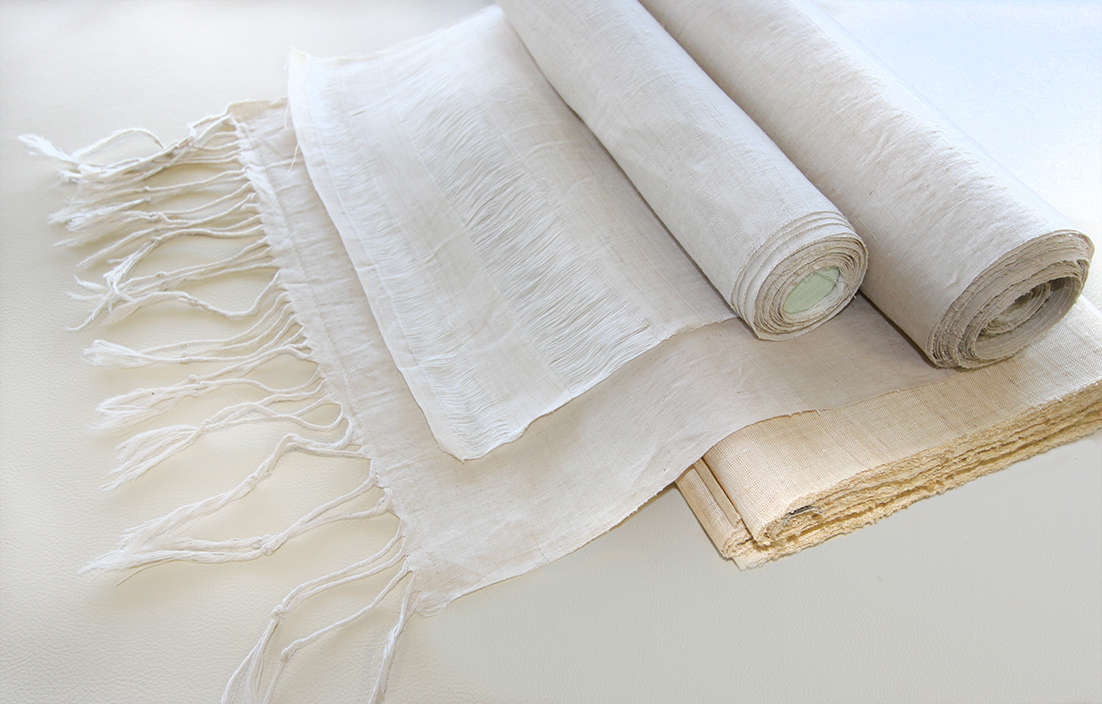奈良晒
Pronunciation: Nara-zarashi
Production area: Nara City, Nara Prefecture
Nara Zarashi is a high-grade linen fabric bleached to a pure white finish. Using hemp as the raw material, the fibers are hand-spun and woven on traditional looms into kibira (plain linen cloth). Through repeated bleaching processes, the fabric is finished into a brilliant white textile that is smooth to the touch and highly water-repellent. The exact origins of Nara Zarashi remain unclear, but records show that linen fabrics were already being produced in the region by the late Muromachi period. An entry from 1549 in the Tamonyin Diary mentions bleaching, and production using ramie (choma) fibers is documented. It was mainly used for samurai attire such as kamishimo and for Buddhist priests’ robes. Sen no Rikyu is also said to have favored it for tea cloths, remarking, “A tea cloth should be white and new.” Due to its purity and quality, Nara Zarashi was highly prized during the Edo period and became an official fabric supplied to the shogunate. Its peak came during the Kyoho era (1716–1735), when it was renowned nationwide as “the finest hemp cloth comes from Nanto (Nara).” However, demand declined drastically after the Meiji Restoration, and today it is produced only on a small scale as a traditional craft.




















